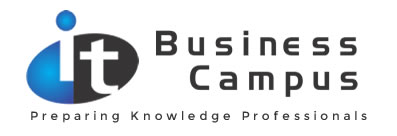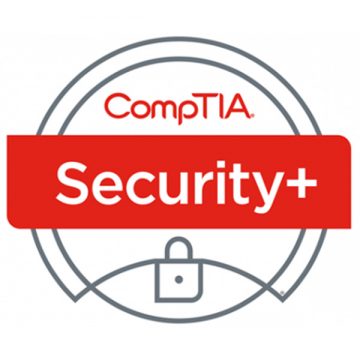Description
The CompTIA Security course is designed to teach students security basics and prepare them for testing to become Security certified. The Security covers many vendor neutral topics including different types of threats and attacks, networking technologies and tools, secure design and architecture, identity and access management, risk assessment and management, and finishes up with Cryptography and Public Key Infrastructure. This covered everything from the ever-expanding virtualization of various computing systems to industry management of smart devices. These topics will be covered from a ground up perspective so that even inexperienced students will be able to follow along. IT security is an ever-growing field and its importance is recognized universally throughout the industry. This security course will cover security concerns from both a professional setting and on a personal level. This gives students who do not plan to apply their certificate in the immediate future the benefit of keeping up to date on the latest security practices and techniques that they can follow to keep themselves secure in a digital world. Each of the modules of this course is designed to align with the official objectives of this certification and expand past the scope of the certification to allow for real life application. They give the student some real life examples of various attacks or security practices that they can both apply in real life or use to further their understanding of a course objective.
Module 1 – Threats, Attacks, and Vulnerabilities
- 1.1 Introduction
- 1.2 Types Of Malware – Part 1
- 1.3 Types Of Malware – Part 2
- 1.4 Types Of Attacks – Part 1
- 1.5 Types Of Attacks – Part 2
- 1.6 Types Of Attacks – Part 3
- 1.7 Types Of Attacks – Part 4
- 1.8 Types Of Attacks – Part 5
- 1.9 Threat Actors – Part 1
- 1.10 Threat Actors – Part 2
- 1.11 Penetration Testing And Vulnerability Scanning – Part 1
- 1.12 Penetration Testing And Vulnerability Scanning – Part 2
- 1.13 Impact Of Vulnerabilities – Part 1
- 1.14 Impact Of Vulnerabilities – Part 2
Module 2 – Technologies and Tools
- 2.1 Networking Hardware And Software – Part 1
- 2.2 Networking Hardware And Software – Part 2
- 2.3 Networking Hardware And Software – Part 3
- 2.4 Networking Hardware And Software – Part 4
- 2.5 Networking Hardware And Software – Part 5
- 2.6 Networking Hardware And Software – Part 6
- 2.7 Security Assessment – Part 1
- 2.8 Security Assessment – Part 2
- 2.9 Troubleshooting Issues – Part 1
- 2.10 Troubleshooting Issues – Part 2
- 2.11 Securing Mobile Devices – Part 1
- 2.12 Securing Mobile Devices – Part 2
- 2.13 Securing Mobile Devices – Part 3
- 2.14 Securing Mobile Devices – Part 4
- 2.15 Secure Protocols – Part 1
- 2.16 Secure Protocols – Part 2
Module 3 – Architecture and Design
- 3.1 Secure Network Architecture – Part 1
- 3.2 Secure Network Architecture – Part 2
- 3.3 Secure System Designs – Part 1
- 3.4 Secure System Designs – Part 2
- 3.5 Secure Staging Deployment Concepts
- 3.6 Embedded Systems – Part 1
- 3.7 Embedded Systems – Part 2
- 3.8 Application Development And Deployment – Part 1
- 3.9 Application Development And Deployment – Part 2
- 3.10 Application Development And Deployment -?Part 3
- 3.11 Physical Security Controls – Part 1
- 3.12 Physical Security Controls -?Part 2
- 3.13 Physical Security Controls – Part 3
- 3.14 Cloud Virtualization – Part 1
- 3.15 Cloud Virtualization – Part 2
Module 4 – Identity and Access Management
- 4.1 Identity And Access Management – Part 1
- 4.2 Identity And Access Management – Part 2
- 4.3 Identity And Access Services – Part 1
- 4.4 Identity And Access Services – Part 2
- 4.5 Management Controls – Part 1
- 4.6 Management Controls – Part 2
- 4.7 Account Management Practices – Part 1
- 4.8 Account Management Practices – Part 2
- 4.9 Account Management Practices – Part 3
Module?5 – Risk Management
- 5.1 Organizational Security – Part 1
- 5.2 Organizational Security – Part 2
- 5.3 Business Impact Analysis Concepts – Part 1
- 5.4 Business Impact Analysis Concepts – Part 2
- 5.5 Risk Management – Part 1
- 5.6 Risk Management – Part 2
- 5.7 Incident Response Procedures – Part 1
- 5.8 Incident Response Procedures – Part 2
- 5.9 Forensics – Part 1
- 5.10 Forensics – Part 2
- 5.11 Disaster Recovery – Part 1
- 5.12 Disaster Recovery – Part 2
- 5.13 Types Of Control – Part 1
- 5.14 Types Of Control – Part 2
- 5.15 Data Security And Privacy Practices -?Part 1
- 5.16 Data Security And Privacy Practices – Part 2
Module?6 – Cryptography and PKI
- 6.1 Cryptographic Basics – Part 1
- 6.2 Cryptographic Basics – Part 2
- 6.3 Cryptographic Basics – Part 3
- 6.4 Cryptographic Algorithms – Part 1
- 6.5 Cryptographic Algorithms – Part 2
- 6.6 Wireless Security – Part 1
- 6.7 Wireless Security – Part 2
- 6.8 Implementing PKI – Part 1
- 6.9 Implementing PKI – Part 2
- 6.10 Implementing PKI – Part 3
- 6.11 Conclusion







Reviews
There are no reviews yet.